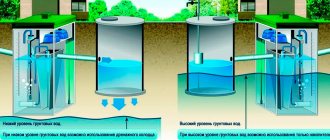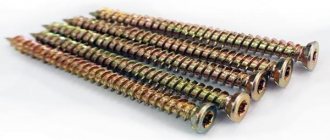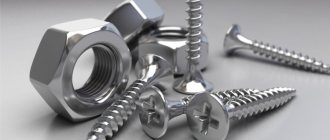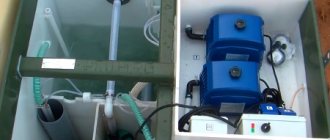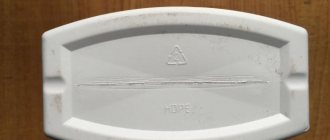Introduction
Water-miscible coolants are very difficult to use. They rot, foam, and cause irritation among staff. However, if you follow the operating rules, you can avoid all of the above problems and increase the service life of the coolant. And here's how:
Let's start our article with a short historical excursion. In the 15th century, craftsmen made weapon barrels using simple hand-operated lathes and drilling machines. Demands for metal products grew, factories were built all over the world, but they used low-productivity manual labor. To produce large quantities of goods, factories lacked high-performance, precision metalworking machines. Thus began the era of development of this industry.
The first coolant was water; it cooled well, but its lubricity was low and it did not protect against corrosion. Since then, people began to think about how to impart the desired properties to coolant.
The coolant must perform three main functions:
1. Lubricate, reducing friction between the tool, the workpiece and the chips.
2. Cool the heating tool, chips and workpiece.
3. Wash away chips from the cutting area.
Of course, the coolant must be safe to use, because a person comes into direct contact with it.
Types of water-miscible coolants
Currently, there are the following types of water-miscible cutting fluids:
— “Mineral cutting fluids” contain from 40 to 80% emulsified oil and a package of additives. When mixed with water, they form coarse, opaque, milky solutions.
— “Semi-synthetic coolants” contain from 5 to 40% combined emulsifiable oils and synthetic fluids, and a complex package of additives (surfactants, extreme pressure, anti-wear, anti-foam, antioxidant additives, biocides). When mixed with water, they form finely dispersed solutions, the oil is distributed so well that the liquid turns out translucent.
— “Synthetic cutting fluids” do not contain mineral oil. They consist of a polymer or glycol base and a package of additives. When mixed with water they form clear true solutions.
Similar
- Installation of insulating tubes on bundles (cables)
- 5S system. Enterprise standard
- Rationing of labor costs
- Process management. Ensuring production culture at the enterprise
- Installation of cable bands (harness)
- Documentation and data management. Basic provisions
- Job description of commercial director
Previous article Shielding protection of open-frame fill connector by coating with conductive enamel XC-928
Next article Installation of insulating tubes on bundles (cables)
Storage of water-miscible coolants
You have purchased coolant, then you need to store it properly until you use up the purchased volume. Water-miscible coolants are stored in tightly closed containers, in covered warehouses that exclude precipitation and direct sunlight, at temperatures from +5 to +40˚С. This is due to the fact that cutting fluids are a colloidal system containing a large number of components interconnected by emulsifiers. If these conditions are not met, the coolant may lose some of its properties.
If it so happens that the coolant has been frozen. You need to warm it up at room temperature and mix the concentrate before use, but there is no guarantee that the coolant will retain all its performance properties.
Mixing Rules
How to prepare components for mixing
To obtain an emulsion of the required concentration, several conditions must be met. The main thing is to follow the storage rules. Avoid excessive heating or freezing of the liquid; the optimal temperature for it varies from +5 to +35 °C. For mixing, be sure to use special (not homemade) equipment; the mixer unit must be reliable. You should also strictly follow the sequence of processes and ensure the cleanliness of the work area. If the technology is disrupted or small foreign particles get into the solution, the quality of the coolant will decrease.
At enterprises, automatic machines prepare the solution, where the required concentration is obtained on the first try. Let's figure out in what proportion to dilute coolant with water and what rules should be followed in the process if you plan to organize mixing in conditions other than factory ones.
Procedure: brief instructions
The basic rule: add concentrate to water, and not vice versa! Adding water deteriorates the quality of the emulsion; it begins to separate. The additive content is also reduced, which shortens the shelf life of the finished substance.
Follow these steps step by step:
- fill the container with prepared water (we will discuss the requirements for it below);
- organize fluid circulation (for example, using return pipelines);
- Pour the concentrate into the water in small portions where mixing occurs.
How to dilute coolant with water? Proportions are calculated using the standard formula:
Mk = (K x Mv)/(100-K)
Here Mk is its mass (kg), K is the expected concentration (%), Mw is the mass of water (kg).
After completing the procedure, check the quality of the coolant using a refractometer.
If the solution is too concentrated, add 1-5% of a less concentrated emulsion to it and vice versa. You cannot add regular water! Keep in mind that during operation the concentration will decrease due to natural evaporation, therefore it is important to control the concentration not only after mixing the coolant with water, but also after, at certain intervals.
What not to do
Do not mix soluble oils directly in the supply tank of the machine; fill the container to the maximum (pay attention to the marks on the inner wall). It is not allowed to mix cold or heated liquids or use chilled containers during operation.
Preparation of working solutions of water-miscible coolants
Water
The first thing you need to pay attention to is water. It is the basis of all water-miscible coolants; for some operations, the water content in the working solution can reach up to 98%. Below is a table with the minimum requirements for the composition of water:
The water must meet the recommended requirements, otherwise it is impossible to confidently say that the coolant will work correctly and with a long service life.
Let's consider the main water parameters that will instantly affect the operation of the coolant:
— Hardness is characterized by the content of calcium and magnesium salt ions in water. The water should not be too hard, otherwise saponification of the coolant is possible. Also, in hard water, emulsifiers in coarse cutting fluids lose their properties, the cutting fluid loses stability and separates into a water and oil phase. The water should not be too soft, otherwise there will be increased foaming. If it is necessary to change water parameters, you will have to spend money on water treatment.
— Mechanical purity of water: sand, silt, turbidity, scale, and other suspended matter will lead to the formation of sediments, which will subsequently lead to an increase in the bacteriological background and an immediate decrease in service life.
— Conductivity is related to the content of alkalis, chlorides, sulfates, carbonates in water. With high water conductivity, a decrease in anti-corrosion properties will begin. Corrosion occurs due to electrochemical interaction and will increase with increasing water conductivity.
— pH level, pH value, a measure of the acidity of water and aqueous solutions. Most coolant concentrates, when mixed with water, give a pH between 8.7 and 10. In this range, additives work most productively. When using water with a low pH value, we can get a low pH of the coolant solution, which will affect the service life. We will create a favorable environment for microorganisms, this will launch the process of biodestruction. In turn, high water pH can also become a problem. If the pH of the coolant solution is higher than normal, there is a possibility of skin irritation (chemical burn).
Proper mixing of concentrate
So, we have dealt with water, then we need to properly mix coolant concentrate with it. The main thing here is to always adhere to one rule - coolant concentrate should always be added only to water. The calculated amount of water should be poured into a clean container or tank of the machine, and then, with vigorous stirring, a pre-calculated amount of concentrate should be added to the water in a thin stream.
I would like to note that manual dilution of the working solution remains dominant in enterprises, but this process is labor-intensive and, as a rule, coolant concentrate is added by eye. Therefore, it is not always possible to achieve the necessary concentration the first time, and sometimes even after dilution there is no room for maneuver. In this matter, special mixing devices or automatic dispensers will come to the rescue.
Rules for replacing water-miscible coolants in machine tools
We have found out how to properly prepare a working coolant solution. Next, we will learn how to properly replace used coolant with a new one. Before filling with freshly prepared coolant, the supply system must be cleaned and antibacterial treated. This process is labor-intensive and takes a lot of time, but if you do not pay due attention to it, fresh coolant can be instantly ruined. One cup of old, spoiled coolant is enough to significantly reduce the service life of a freshly prepared solution. How to prevent this:
1. Approximately 8 working hours (for moderate contamination) or 16-24 working hours (for severe contamination) before the scheduled replacement, add a special detergent with a bactericidal effect to the working coolant solution, we suggest using “ECOSD” for this, in a concentration 2.5-3.0%;
2. Continue working as usual. During operation, the entire coolant supply system will be cleaned and disinfected. The ECOS-D cleaner does not degrade the quality of the coolant operating in the system and does not disrupt the operation of the technological process;
3. Completely drain the waste liquid into previously prepared containers for disposal;
4. Carry out mechanical cleaning of containers, trays and accessible parts of equipment from chips, sludge, dirt, mucous deposits of microbiological origin and other contaminants. If there is a high-pressure pump, resort to mechanical cleaning of surfaces with a jet of liquid;
5. Minimally fill the system with a weak solution of coolant or clean water (allowed) and ensure circulation for 30 - 60 minutes;
6. Drain coolant or water from the machine, carry out mechanical cleaning if there are contaminants washed out of the pipelines;
7. Fill the system with freshly prepared working coolant solution in the required concentration;
Please note that replacement carried out in this way contributes to the maximum service life of the new working coolant solution.
Replacing coolant
Subject to the requirements of the preparation instructions (see point 4) and proper use, the average service life of the emulsion from OILCOOL CLEANLINE concentrate is 6-8 months, and the maximum is up to 14 months.
Signs that coolant replacement is required are:
- the appearance of an unpleasant odor, clouding and separation of the emulsion;
- strong blurring of the boundary between the blue and white zones on the refractometer scale.
Untimely replacement of coolant in CNC machines leads to a decrease in the quality of parts processing and expensive equipment repairs.
6.1 Coolant regeneration
To determine whether the coolant can be reused, you need to check whether its service life has expired (in this case, it must be replaced).
If the service life is normal, but increased foaming is observed in the processing area, it is necessary to reduce the coolant turnover rate (the number of cycles that the entire volume of the working emulsion completes within 1 hour). If the desired results are not obtained, check the concentration and degree of biodestruction of the solution, the hardness of the aquatic environment, and the content of foreign substances.
OILCOOL CLEANLINE coolant can be reused after regeneration by cleaning it from foreign impurities, normalizing the pH level, biorefining and disinfection in special installations, and correcting technological characteristics.
Control and maintenance of water-miscible coolants
Previously, we went through all the stages of preparing for the operation of water-miscible coolant, now it is poured into our machines and it’s time to learn how to care for it. This is where the fun begins, because water-miscible coolants are very capricious and require due attention. And the thing is that the basis of water-miscible coolants is water, and it is a natural environment for bacteria and fungi. In addition, you need to take into account the fact that water-miscible coolants are complex multicomponent systems that undergo physical and chemical changes during their operation:
— The first thing we notice during work is an increase or decrease in the concentration of the working solution, associated with the evaporation of water or the carryover of the oil phase with chips (has adhesive properties);
— Change in pH of the working solution due to the activity of bacteria and fungi; — Accumulation of foreign oil in the tank with the working solution, for example oil for guides;
— Accumulation of metal dust and shavings in the machine tank;
— Ingress of mechanical impurities into the working solution from the environment;
— Oxidation of oil and active additives upon contact with air;
— Foaming;
It is important to know how all these factors affect the emulsion, how to control them and what corrective actions need to be taken.
To monitor changes in the parameters of the working solution, it is recommended to keep a table in which the following measurements should be entered:
— Concentration (It is recommended to take measurements every day);
— pH (Recommended to do once a week);
— Volume of working solution in the tank;
— Smell (It is recommended to check every day);
— The presence of oil on the surface of the working solution in the tank (It is recommended to check every day);
— Bacteria/fungi (Recommended to be done as needed);
Concentration control
The most important and most frequent thing you will check is the concentration of the working solution. It is very important to maintain the concentration within the operating range recommended by the manufacturer. Because low concentrations promote bacterial growth, may cause corrosion of machine tools/workpieces and reduce metal processing efficiency. In turn, a high concentration can cause skin irritation, foaming, plus at high operating modes the cooling efficiency decreases.
It is recommended to take samples to determine the coolant concentration directly in the working area of the equipment. Concentration can be determined in two ways:
Laboratory (titration method)
Portable (using a hand-held refractometer)
When using a refractometer, the following formula is used to obtain the actual concentration of the working emulsion:
Actual concentration = PR * PC
Where PR is the refractometer reading;
PC - correction factor for coolant (all coolants have a different coefficient, due to the composition), indicated in the technical description for the product;
Next, when we know the concentration in the equipment, we need to make the necessary adjustments to the working solution. We recommend calculating the amount of concentrate required for adjustment using the following formula:
V = Vworking solution * (Crequired - Ccurrent) / (PC - Crequired)
Where V is volume, liters
K - concentration, %
PC - correction calculation factor (need to increase concentration -
100; need to reduce concentration - 0)
pH control
Another equally significant parameter is pH or hydrogen index; we use it to monitor the acid-base balance in working coolant solutions. Once again, let's briefly recall the theory: The working pH range of coolant is from 8.7 to 10. A low pH in the working solution will create a favorable environment for microorganisms, this will start the process of biodestruction, which will affect the longevity of operation. High pH in the working solution can cause skin irritation (chemical burns).
Express pH analysis can be performed in two ways:
Electronic device pH meter
Using test strips (litmus paper)
Biodefeat
Let us focus on this topic, since this is the most important factor due to which water-miscible working coolant solutions become unusable. Bacteria are one of the first forms of life on earth and the most numerous, their biomass is greater than the biomass of plants and animals combined. Bacteria surround us everywhere, in soil, water, on every surface, be it a house, a table or a bed. They exist outside and inside us, so it is important to know how we can get along with them, but we will naturally speak only in the context of water-miscible cutting fluids.
So, bacteria surround us everywhere and naturally they are present in water-miscible cutting fluids. It is worth noting that from the point of view of coolant operation, bacteria can be divided into two types - harmless and harmful. Harmless bacteria live in an environment in which oxygen is present. Harmful bacteria begin to thrive in an environment lacking oxygen, and it is because of them that the coolant becomes unusable. Oxygen is a deterrent to the growth of harmful bacteria; the coolant must be constantly saturated with air. During operation, while the coolant circulates through the equipment system, the working solution is saturated with oxygen and this helps the “good” bacteria to gain the upper hand. If there is no oxygen supply to the coolant, for example, during prolonged downtime of the machine park (it is worth noting that foreign oil that completely covers the surface in the machine tank makes a significant contribution, since the access of air to the coolant tank is stopped), the environment becomes favorable for starting activity of harmful bacteria. Reproduction begins, bacteria feed on mineral oil, emulsifiers and inhibitors, reducing anti-corrosion protection and causing damage to working coolant solutions. All this is accompanied by the formation of deposits and the smell of a “rotten egg” of hydrogen sulfide, and the working solution may also change its color to blue-gray. We fix the main signs of biological damage:
— Unpleasant odor;
— Decrease in pH level below normal
— Changing the color of the working solution
— An indirect sign, in the presence of which it is necessary to take action, is foreign oil on the surface in the tank.
If one of these signs appears, it is necessary to urgently check the working solution for biological damage. For testing, special immersion slides (deepslides) are used. The slide plate is covered with a dense nutrient medium, on one side pale yellow TTX agar, which promotes the growth of bacteria, and on the other, pink Bengal agar, which promotes the growth of fungi and yeast. The slide is immersed in a sample of liquid, and after the excess has drained off, it is placed in a test tube. Next, keep in a dark place at room temperature for 3-5 days. After time, the appearance of the deep slide is compared with the standards.
The number of CFU/ml 102 is considered insignificant and does not require special corrective actions; it is enough to increase the concentration of the working solution to suppress the growth of bacteria. The number of CFU/ml 104 is considered significant and requires the introduction of special bactericidal compounds (biocides or fungicides) into the working solution; we suggest using the “BACCID” biocide. The number of CFU/ml above 104 is considered critical and correction is not advisable. A complete replacement of the working solution is required after thorough cleaning of contaminants and residues of old coolant, washing and disinfection of the coolant supply system with a washing-disinfecting solution. For these purposes, we suggest using the EKOS-D coolant supply system cleaner.
Coolant control during operation
The frequency of monitoring of water-miscible coolants is regulated by GOST 12.3.025-80 (depending on operating conditions, but at least once a week). When using an emulsion from OILCOOL CLEANLINE coolant concentrate, the following indicators are subject to mandatory monitoring.
| Index | Determination method | Norm |
| Appearance | Visually | Transparent to translucent with a yellow or brown tint |
| Smell | Organoleptically | Specific, non-irritating |
| Concentration | Refractometric, titration | Technologically selected |
| Hydrogen value (pH) | GOST 6243 | 8 – 10 |
| Corrosiveness to ferrous metals | GOST 6243 | Withstands |
| Mechanical impurities (%), no more | GOST R 50558 | GOST R 50558* |
| Foreign oils (%), no more | GOST R 50558 | GOST R 50558* |
| Biodefeat (CFU/ml) | TTX test | 105 |
*The standard is established for a specific type of metalworking.
5.1 Measuring coolant concentration
The coolant concentration requires daily monitoring, since it directly affects the technological properties of the working emulsion.
In production conditions, the most convenient way to determine the concentration of coolant is to measure the refractive index (refraction) of the working emulsion with a refractometer.
The refractive index of coolant depends not only on its concentration, but also on temperature. Therefore, before each measurement, it is necessary to calibrate the refractometer: apply the water that was used to prepare the coolant to the prism, and after 30 seconds, set the boundary between the blue and white fields to zero (Fig. 1).
Next, the prism must be wiped dry and the coolant under study must be applied to it. The location of the boundary line on the scale will show the concentration of the solution (Fig. 2). To obtain the true value of the emulsion concentration, this indicator is multiplied by the refractive index indicated in the technical description of the coolant. Fig.1 Fig.2 Based on the measurement results, a graph is constructed, according to which a decision is made on the need to correct the emulsion concentration:
5.2 Control of biological damage to coolant
The frequency of laboratory monitoring of coolant biodestruction depends on the specific production conditions. The working emulsion must be checked visually and organoleptically daily. If there is a change in color and consistency, cloudiness, or the appearance of an unpleasant odor, it is necessary to conduct an unscheduled analysis of the coolant.
To monitor biological damage to the cutting fluid, use dip slides - plates, the yellow side of which determines the level of bacteria, and the pink side - mold and yeast fungi.
After keeping the dip slides in the incubator for 24-48 hours, compare the obtained test results with the samples.
If the coolant contains bacteria more than 10 3 CFU/ml, yeast fungi more than 10 2 CFU/ml, mold from 3 points, it is necessary to correct the pH value of the working emulsion and introduce biocides into it.
The list of biocides for cutting fluids is given in GOST 12.3.025-80 (Appendix 3).
Removing foreign oil and mechanical contaminants
Previously, we learned that foreign oil on the surface of the tank will create a favorable environment for the growth of bacteria, but the accumulation of metal dust, shavings, and mechanical impurities (from the environment) will add “wood to the fire.” Therefore, it is important to remove all contaminants, because, in addition to problems with biodestruction, the coolant supply system can become clogged.
To remove contaminants from the coolant supply system, a filtration system and various types of skimmers are used.
Foaming
Let's look at another significant factor that may arise during coolant operation.
Foaming occurs when the coolant dissipates in the working solution
(dispersed) a significant amount of air. Since coolants contain surfactants, the air escaping from it, interacting with the surfactant, forms flakes of foam. When working with an airy working solution, the cooling and lubrication of the cutting tool deteriorates, causing breakage of the cutting edges. Additionally, foam can be a huge problem if a machining center is installed on a production line. On such lines, the machines are equipped with level sensors; when abundant foam is formed, the sensor is triggered, registering overflow. Together with the machine, the operation of the entire line completely stops.
The causes of foaming can be divided into two types: chemical and mechanical:
— Chemical foaming occurs, for example: if the water hardness is too low, or the coolant concentration is too high, in rare cases due to a large penetration of foreign oil into the coolant.
— Mechanical foaming occurs, for example: due to a clogged filter on the supply pump, or a high rate of coolant circulation (the emulsion does not have time to settle in the tank and release the air).
To prevent foaming, we recommend using Causton P; this defoamer effectively prevents the formation of foam in various temperature ranges and is active in low concentrations (from 0.001% to 0.1%);
Tips for flushing and cleaning the system
You need to start by adding detergents, disinfectants and biocides to the reservoir with the solution that is to be replaced. Following the instructions for the specific cleaner, it is necessary to clean the system. Afterwards, you need to rinse the entire system with clean water; if possible, rinse with a fresh solution at a concentration of 0.5%. After flushing, the system is filled with a new working solution.
When you fill the system, check the concentration and take a control sample for analysis in the laboratory.
Note: some industries use a different cleaning system that involves the complete removal of all contaminants, including mechanical ones, as well as microorganisms, fungi and bacteria. Such “author’s” techniques are often much better than standard recommendations.
Using the working solution. The process of operating the solution must be periodically monitored in order to clarify the condition of the cutting fluid. The readings should be recorded in a special log book.
What parameters need to be monitored?
- appearance
- concentration percentage
- acidity index, pH
- amount of mechanical impurities, %
- amount of foreign oils, %.
- corrosion test
- biodestruction analysis
4% is the optimal concentration of the working solution. Concentration can be measured in two ways - chemical and optical. During measurements, an optical refractometer allows you to obtain reliable results for a freshly prepared solution with slight contamination.
For high accuracy, it is necessary to calibrate the refractometer with distilled water immediately before the next analysis. Multiply the device data by the refractive index (it is indicated for any product in the TDS and container label). The result will be the percentage concentration of the solution.
The refractive index values in the TDS and on the label may vary slightly within +/- 0.05
All refractometer readings will be correct only at a temperature of 20ºC. If measurements take place at a different temperature, then it is necessary to make a correction calculated by the formula: n' = n20 + (20-t)*0.0002, where
- n' – refractive value at the measured temperature,
- n – standard refractive index,
- t – actual temperature of the measurement being carried out.
For aqueous solutions and water at a temperature of 20 ± 5 °C, the refractive index changes to the same value, therefore, when making measurements in this temperature range, it is not necessary to make a correction; it can be neglected.
If the working solutions are significantly contaminated with foreign oils, then before measurement the solution must be left for 24 hours or loaded into a laboratory centrifuge for 2-3 minutes and rotated at a speed of 3000 - 4000 rpm. All results obtained using a refractometer must be duplicated using chemical measurement methods. Laboratory chemical analysis gives a more accurate result.
For constant operational monitoring at the workplace, it is worth using a titration kit, otherwise known as Titration Kit. Control of solution concentration in the laboratory is carried out by chemical titration, sometimes by acid decomposition.
Acidity control (pH indicator) must be carried out in accordance with GOST 6243-75. And as we have already mentioned, this value should be within the range of 8.5 – 9.5. Corrosion testing can be done according to GOST above or according to the DIN 51360/2 method. Biodefeat is detected by the TTX test according to GOST 9.085-78 or DIP slides.
The maximum permissible value for the level of bacteria is 103, fungi -102. The growth of biological damage must be suppressed using biocides. Technologists at the Zeller+Gmelin plant recommend biocides and fungicides of their own production, because they are developed in combination with coolant concentrates. All products come with instructions for use. It is important to follow the biocide addition technique because all these actions affect concentration.
Active use of the cutting fluid implies its contamination with foreign oils (leakage of equipment components, washing away of lubricants from machine parts by the flow of coolant). I repeat, such oils negatively affect the quality of the working solution.
The film of such oils contained on the surface of the coolant solution in the tank creates conditions for the rapid growth of bacteria and microorganisms. These oils can partially dissolve when stirred, and this has a bad effect on the durability of the working solution and the quality of concentration level measurements.
The upper threshold for the content of foreign oils should not be higher than 5% of the total volume of the coolant supply system. Standards do not regulate this indicator, but there is a generally accepted value based on the worldwide practice of using water-soluble coolant in metalworking and mechanical engineering enterprises.
The oil film formed on the surface of the working solution should be removed - this will help extend the service life of the solution. Foreign oils can be removed using a skimmer, a special device that can effectively and without human intervention clean the surface of the solution in the container.
Graphite sometimes accumulates in tanks in the aggregate state of a fine-grained suspension; it gets there after various technological processes. Graphite is very undesirable in the composition of the working solution, because it is a highly hydrophobic substance. Its particles are so small that it is almost impossible to filter them. But here foreign oils come to our aid. Graphite is absorbed and removed using the methods described above.
Conclusion
We have come a long way with you in mastering the rules of coolant operation; by adhering to them, you will be able to extend the service life of working coolant solutions and avoid problems that arise during improper operation.
Contact us, our technical specialists will be happy to select cutting fluid and related products for your equipment. Having purchased products from us, you will not be left abandoned. All emerging issues regarding the operation of our products will be resolved with the customer technical support department.

